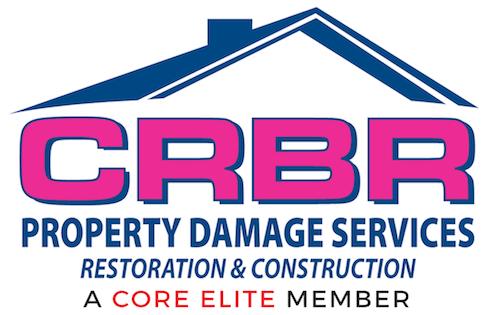First Impressions Lie in Water Damage
A freshly mopped floor, a dried-out rug, and maybe a new coat of paint can give a home the illusion of recovery. But water damage doesn’t end when things look dry. In fact, the real destruction usually begins after surface-level cleanup. Most property owners in Chico experience a repeat crisis simply because the original issue was never handled beneath the surface.
When Water Hides, It Grows Stronger
Moisture never stays put. A water pipe break under a sink or inside a wall may cause minimal puddling in one room but introduce widespread issues across adjacent spaces. That same event can trigger unseen floor water damage, loosen subfloor glue, and warp nearby trim long before discoloration appears. By the time you notice it, it’s no longer a cleanup job — it’s a structural restoration emergency.
Likewise, a kitchen sink overflow or shower & tub overflow sends water cascading into hidden corners. If water is not extracted fully and airflow is not introduced into cavities, the lingering moisture becomes the silent destroyer of your home’s foundational elements.
Appliances and Bathrooms Are Common Starting Points
Major incidents don’t always start with floods. A worn dishwasher gasket or washing machine hose can result in an appliance leak cleanup situation. Even a small drip from these sources, left undetected for a week, can cause moisture migration under cabinets and into drywall. Once inside those materials, water does what it always does — it spreads, weakens, and ruins.
Bathrooms are just as notorious. A simple toilet overflow cleanup or bathroom sink overflow may not seem like an emergency. But those events often lead to wet baseboards, water behind vanities, and soaked drywall. Unless these are replaced or professionally dried, the damage continues beneath the surface, even while everything above looks “clean.”
The Dirty Secret Behind Pipe and Drain Failures
Slow leaks, like those from pipe leak cleanup service requests or unnoticed broken water pipe repair jobs, are some of the most dangerous. They lack urgency, so people wait. But moisture in wall studs, framing, and subfloors accelerates damage with every passing hour — especially in summer heat.
Then there are drain issues. A clogged drain overflow may not flood your home, but it still delivers enough moisture to breach seams between flooring panels or behind cabinets. Once again, the water may not be seen — but it’s working, quietly, behind every visible structure.
Why You Can’t Trust the “Looks Dry” Test
If you’ve experienced a burst pipe damage cleanup, you’ve likely heard someone say, “It looks dry now.” But water doesn’t just disappear because the surface feels normal. Hidden moisture under floors or inside walls can persist for weeks. Without proper water extraction & removal, these pockets fester, rot, and decay.
Even after a main water line break or water line break, the visible water may be gone. But the damage isn’t. These events push water into low points and into porous material, which can soak up gallons undetected. By the time rot appears or your floors begin to creak, it’s months too late to fix cheaply.
Roofing and HVAC Systems Contribute Without Warning
A roof leak isn’t always obvious. Many roof leaks begin small — just a missing shingle, some cracked flashing, or ice damming. When they fail, water trickles into attics, insulation, and wall cavities. Then, on a warm day, you smell mildew. Weeks later, drywall crumbles. Without addressing that source, you’ll deal with repeat storm and wind damage cleanup every season.
Your HVAC system can also be a problem. When the system’s condensation overflow malfunctions, you’re looking at a hvac discharge line repair job. If water from the unit travels to carpeted areas or through ceiling tiles, it may cause widespread issues below long before any visible sign emerges.
Floods Always Hit Harder Than You Expect
The force of flood damage is obvious — but the extent of flood damage often isn’t. If your team doesn’t perform professional flood damage cleanup, contaminated water may remain in framing, drywall, or crawlspaces. And if that water contains sewage or organic debris, it becomes a health hazard quickly.
You can’t overlook the sanitation side of this either. Floodwaters commonly require sewage removal & cleanup, even if the flood wasn’t from a sewer. Groundwater carries toxins and microbes that penetrate surfaces. These materials can’t be “cleaned.” They must be removed.
Fire Doesn’t Burn Alone
One of the most common surprises is how fire turns into a water problem. A kitchen blaze results in a fire damage restoration job. But the water from suppression efforts, especially if fire hoses were used, can saturate an entire floor. That leads to secondary fire damage cleanup and hidden water problems.
After the fire is out, smoke damage cleanup is often the focus. But underneath the char, water is sitting. It runs into joints, seams, and electrical cavities — sometimes requiring more work than the fire caused. If water wasn’t extracted immediately, there’s a high chance the restoration will need to be redone.
Why It Matters to Get It Right the First Time
Every one of these scenarios — whether from a pipe, a flood, a storm, or a fire — points to the same issue: hidden water destroys homes slowly. Rushing through restoration or relying on visual inspections leaves major risks in place.
The smartest thing you can do is work with a water damage restoration company that looks beyond the puddle. One that uses tools to measure moisture, open up suspicious areas, and rebuild only once it’s safe.
Because when cleanup looks done, and it’s not, the damage never ended. It’s just waiting for your floor to buckle, your drywall to crumble, or your next storm to expose the truth.
The biggest mistake? Thinking visual cleanliness equals structural recovery. Without a full water damage cleanup, water seeps into areas no one checks — beneath floors, behind cabinets, inside walls, and even around plumbing routes.
